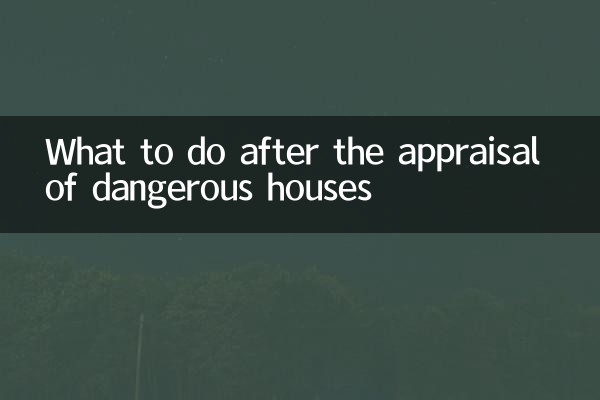What to do after the appraisal of dangerous houses
In recent years, with the acceleration of urbanization and the prominent problem of aging buildings, the identification and subsequent treatment of dangerous buildings has become a hot topic of social concern. This article will combine the popular discussions on the Internet in the past 10 days to systematically sort out the process, processing methods and related policies of dilapidated building identification, and present key information in structured data.
1. Dangerous building identification process and standards

Dangerous building appraisals are usually completed by professional organizations. According to the "Dangerous Building Appraisal Standards" (JGJ 125-2016), they are divided into four levels: A, B, C, and D. Here is a brief description of the identification process:
| Appraisal level | definition | Handling suggestions |
|---|---|---|
| Class A | Structurally safe, no handling required | Regular inspection |
| Class B | Some components have hidden dangers | partial repairs |
| Class C | Some load-bearing structures do not meet safety requirements | Reinforcement or partial demolition |
| Class D | The overall building is dangerous and may collapse at any time | Evacuate and dismantle immediately |
2. How to deal with dangerous buildings after identification
According to the identification results, the treatment of dangerous buildings mainly includes the following methods:
| Processing method | Applicable conditions | Implementation subject |
|---|---|---|
| Repair and reinforcement | Class B or C dilapidated buildings | Owner or government (subsidy) |
| Reconstruction on original site | Class D dilapidated buildings comply with planning | owner or developer |
| Relocation and resettlement | Class D dilapidated buildings that cannot be rebuilt | Government-led |
| Demolition compensation | Incorporate into urban renewal projects | Government negotiates with owners |
3. Relevant policies and subsidies
Various localities have introduced corresponding subsidy policies for the renovation of dilapidated buildings. The following are the subsidy standards in some regions (the latest data in the past 10 days):
| area | Subsidy type | Amount (yuan/㎡) |
|---|---|---|
| Beijing | Seismic reinforcement subsidies | 200-500 |
| Shanghai | Dilapidated building reconstruction subsidy | 800-1200 |
| Guangzhou City | Relocation and resettlement compensation | 1.2 times the market price |
| Chengdu City | Maintenance subsidy | Up to 50,000 yuan/household |
4. Common problems in dealing with dilapidated buildings
1.Unclear division of responsibilities: The property rights of some old communities are complex and maintenance responsibilities are difficult to define, which must be resolved through the coordination of the owners' meeting or the government.
2.Shortage of funds: Low-income families have difficulty affording repair costs and can apply for special assistance or installment payments.
3.resettlement dispute: The relocation compensation standard may cause disputes, and it is recommended to have it approved by a third-party evaluation agency.
5. Operation suggestions
1. Entrust a professional institution for appraisal in a timely manner and retain the written report as the basis for processing.
2. Pay attention to the updates on renovation of dilapidated buildings released by local governments and apply for eligible subsidies.
3. D-level dangerous buildings must be moved out immediately to avoid personal and property losses.
Dealing with dilapidated buildings involves safety, legal, economic and other factors, and requires coordinated promotion by owners, government and social forces. Through scientific identification and reasonable disposal, it can not only ensure the safety of people's lives, but also promote the sustainable development of the city.

check the details

check the details